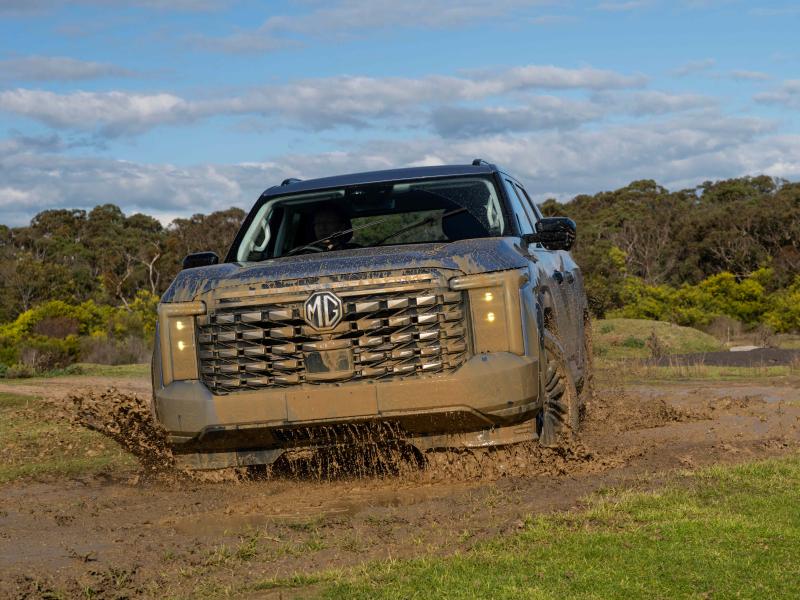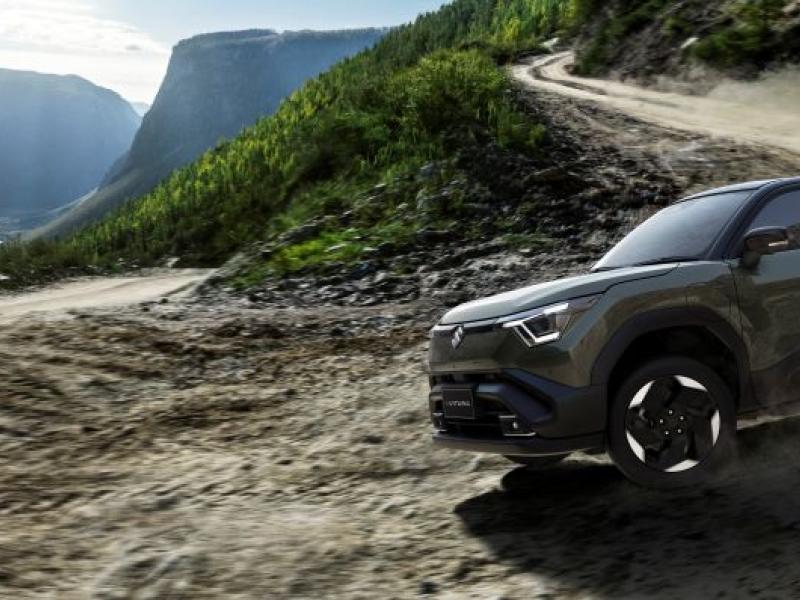Like Holden, Aussie tuning house HSV (Holden Special Vehicles) has had to re-invent itself. If the new Colorado-based SportsCat TD DC ute is anything to go by, that isn’t such a bad thing, syas NZ4WD magazine editor Ross Mackay.
Subtle is hardly a word you would associate with any Commodore-based HSV product. Yet that’s the word that keeps popping into my mind when I think of the Melbourne-based tuner and bespoke manufacturer’s ground-breaking latest model.
For a start unless you know what you are looking for (the Lion ‘n helmet logo) you’d be hard pressed to actually tell it is a product of the renowned Holden tuner. Because grille, wheel centre and steering wheel badges aside there is literally no way of telling.
It certainly sounds no different to the standard 2.8 litre four-cylinder turbo diesel Holden Colorado on which it is based. Nor does it accelerate quicker, punch harder or otherwise out-perform a base model Colorado because – shock, horror – the SportsCat and SportsCat+ models must (surely!) be the first HSVs to land on showroom floors with absolutely no (none, zero, nil, nada) engine mods.
That’s right, what once was the company’s stock-in-trade is no more; no cold air box ‘n K&N filter upgrade, no exhaust manifold upgrade, not even a chip re-map.
And as for the LS3 V8 petrol upgrade one reader swore black and blue ‘the new HSV ute’ was going to arrive here with, well, all I can say is ‘good luck with that!
Needs must, of course, and with four-door DC TD utes selling like gang-busters on both sides of the Tasman the decision by HSV to swap RWD Commodores for 4x4 Colorados can hardly have been a difficult one to make.
It’s not as if your average Colorado was going to be difficult to improve either. Regular readers will know that I am a bit of a fan of the latest model. But given the task and a suitable budget there are improvements I know I’d like to make.
Or, the case of the HSV SportsCat, let someone who knows what they are doing, do the job!
There are two models in the new line-up, the SportsCat with RRPs of $73,990 (man) and $75,990 (auto), and the SportsCat+ (as tested here) with RRPs of $80,990 (man) and $82,990 (auto).
Both get wholesale upgrades to the chassis, suspension, brakes, wheels and interior. The SportsCat+ also gets a trick de-coupling rear anti-roll bar (which disengages automatically when you select low range) for greater rear wheel articulation, plus the option of a set of larger diameter and remote-reservoir-equipped SupaShock shock absorbers if you plan on doing a lot of your driving off road.
Both models get stiffer front springs and re-calibrated MTV (multi-tuned valve) dampers as well as a 25mm increase in ride height for what the company reckons is a flatter, more natural on-road stance, plus incremental improvements in both ground clearance and approach angles.
Hand-in-hand with these changes come recalibrated ESC and TCS electronics to allow a little more slippage and AP Racing-based upgraded master cylinder, way larger (by over 60mm) rotors and four-piston caliper front disc brake package.
Filling the wheel arches are some suitably HSV-spec, negative off-set (for a wider track) forged 18 x 10 (yep you read that right, 10 inches!) alloy wheels shod with Cooper Zeon LTZ Sports A/T tyres developed by Cooper specifically for the two SportsCats.
Higher ride height (by 36mm cfm a Holden-badged Colorado) and 30mm wider track/broader-shoulders, the two SportsCats can be distinguished by their all-new noses (each model has a distinctive grille), LED fog lamps, contrasting (silver) valence/sump-guards and functional (bright red) tow hooks.
The SportsCat+ also gets a bonnet bulge and those odd-looking ‘cut-out’ fender flares, while both it and the base SportsCat come complete with NZ-made quick release, lockable (and linked to the smart key’s central locking function) hard tray covers with provision for load rails, plus a soft-shut tailgate.
So what’s it like?
OK. First up. It’s no fire-breather. If anything, a standard Colorado (lighter and on smaller, spindlier tyres) is probably marginally quicker off the mark. That said, it is also no less smoother and refined (if that’s the right word). Something you could never say about ANY HSV-modded Commodore.
Take the HSV-modded, heated and the driver’s one at least, electrically adjustable, front seats (new foam, new squab shapes, new coverings). They are stunning; so much more accommodating and all-day comfortable than most others ex-manufacturer you will want a set for your front room. OK probably not, but you get my drift.
Ride on (and yes also off the) road is also a cut above the industry standard. For instance, the SportsCat+ is the first body-on-chassis ute I have driven which exhibits absolutely zero (what I call) scuttle shake when you are cranked over and pushing hard through a typical rough ‘n ready back country corner.
That’s some achievement, particularly when you factor in the extra width (track front and rear is up 30mm) and weight of those 10 inch wide alloy rims and gumball-like 285/60 (that’s over 11 inches wide in the old money) tyres.
Seeking an answer for how HSV has sorted an issue that would appear to be beyond the manufacturers themselves I discovered that HSV has added some (obviously much-needed) bracing to the top strut mounts to (and here I’ll quote directly from the company’s briefing document) “deliver outstanding front-end support with less body roll!’
To which all I can do is concur!
I’m also a fan of the brake upgrade the SportsCat+ gets. The larger (by 62mm) front disc rotors and pukka (red-painted) AP Racing four-pot calipers work well with the (unchanged) rear drums. Compared with equivalent standard utes you have to use (quite a lot) more pedal pressure, but when you do you are rewarded with the sort of sort of serious, fade-free retardation I would expect from, well, an HSV Commodore.
It was a brave move by HSV to walk away from the performance road car market it virtually owned (in this neck of the woods anyway) and take on a completely new sector.
By doing so, however, it has effectively future-proofed its business. By starting with chassis, suspension and styling modes it has also created a solid base on which to add some icing in the form of engine mods (or swaps!) in years to come.
To read the full story in the September 2018 issue of NZ4WD go to Zinio.com (August 17) or purchase your own hard copy at the Adrenalin store.






